1.2. Accounting
Now that you've setup your first Building and Tenant, you want to keep track of the bills.
STEP 1: Create a new Accounting Entry
For revenues and expenses you can create two types of entries:
- One-time accounting entry for a payment that you will have only once
- Scheduled accounting entry for any recurrent payment such as a rent, utitities, etc. that you want to automate
To get to the accounting section you need to go to the accounting menu by clicking on the Accounting menu button. To view all Accounting Entries and/or to enter in a single Accounting Entry select Accounting Entries from the menu. To view and/or edit recurring entries click on the Scheduled Accounting Entries option. The Suggested Accounting Entries menu is to view all suggested entries generated from the scheduled entries, so for example to view a recurring rent payment that is scheduled to be generated each month.
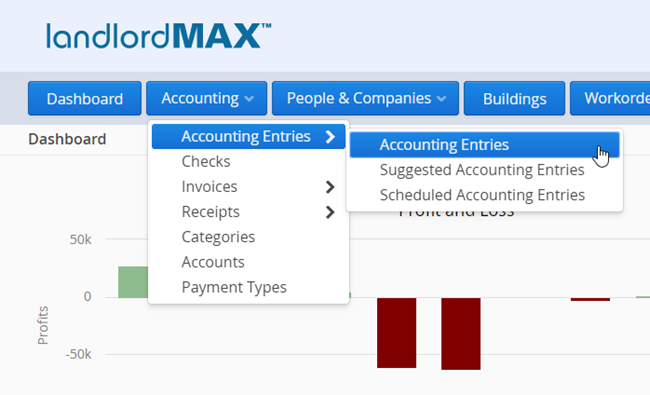
In this section we're going only going to cover entering in a single one-time Accounting Entry, the details about creating recurring entries (that is Scheduled Accounting Entries) can be found in Section 3.3 of the user manual. By default the software will also create scheduled entries for you based on the Leases. More information on this can be found in Section 4.5 of the user manual.
But before we get into details on how to create an Accounting Entry let's first covert the Color Codes in the accounting table. The software comes with 7 Color Codes which can be customized under the System Settings. By default however green represents an Accounting Entry that is due in the future. Blue represents entries that are due today. Yellow, orange, and red represents entries that are late of varying degrees. By default they represent up to 3 days late, up to a week late, and anything later than a week. In addition to the colors you can also set what each color represents in terms of lateness, that is how many days late each color represents. White represents entries that have been paid. And lastly gray represents entries that are NSF.
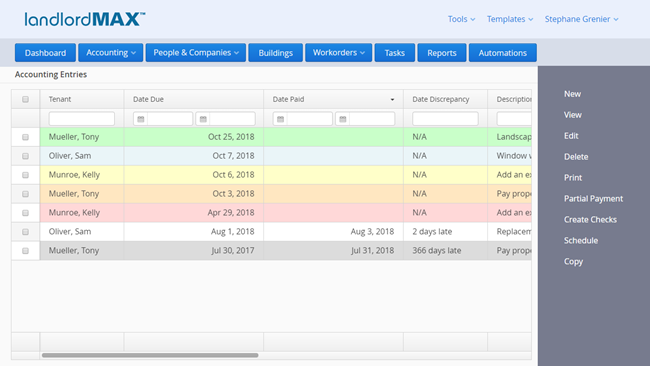
For those of you who prefer you can view the YouTube video tutorial below which explains how the Accounting Color Codes work.
That being said once in the accounting section click on the New action to create a new Accounting Entry.
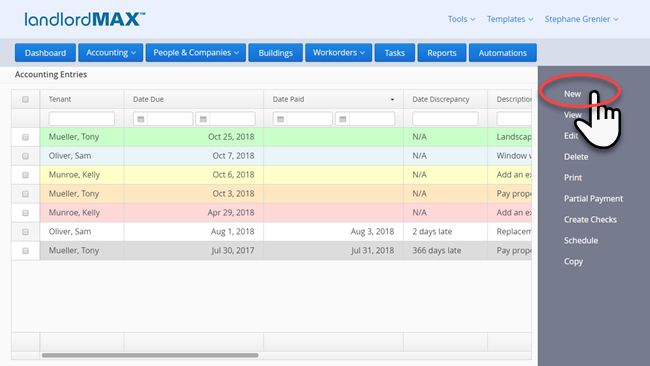
Once you've clicked on the New action you will be presented with the form view for the Accounting Entry at which you can enter in your Accounting Entry data. Please note that all fields are optional.
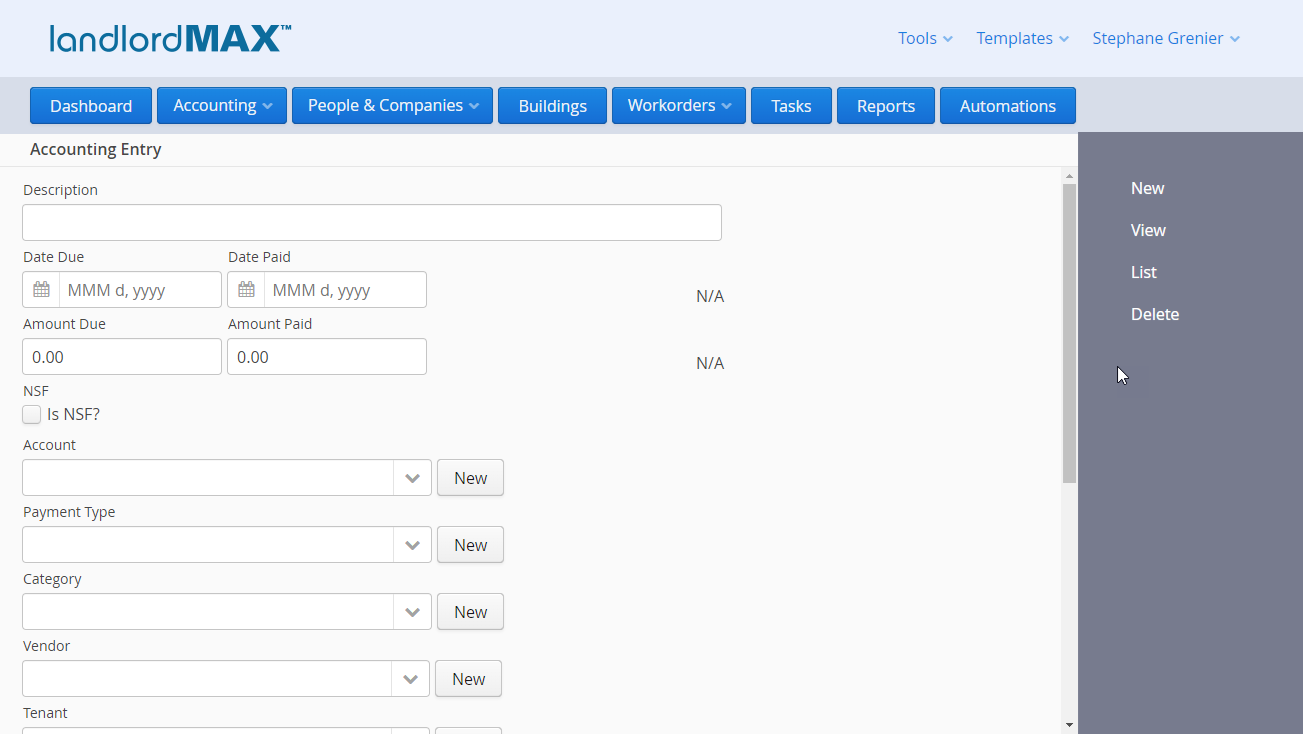
By default the system provides you with default Categories, Payment Types, etc. but if you need to create any new ones you can do so by clicking on the New button to the right of the field.
** IMPORTANT NOTE: Please note that typing in a value in the fields will result in the software trying to find the matching entry, it does NOT create a new value. So for example if you type in Bob Smith for the Tenant then it will search for the Tenant Bob Smith and select them if they exist. If they don't exist then it will NOT create a new Tenant called Bob Smith, to do that you need to either click on the New Button besides the Tenant field to create a new Tenant and then select them.
Once you've entered in all the data you want click on the Save button at the bottom of the form.
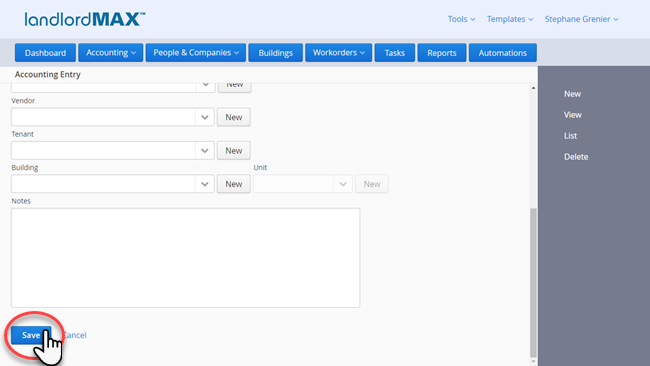
After the Accounting Entry has been saved you will be brought to the data view of the Acccounting Entry.
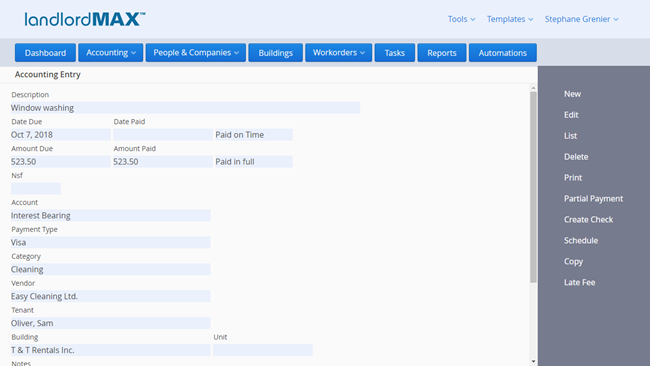
From here you can perform all the different actions found on the right menu such as Schedule to create a recurring entry based on the current entry (Scheduled Entries are explained in Section 3.3 of the user manual). You can Copy an existing entry if it's very similar and you just want to edit some fields. You can click on Create Check to create a check based on the current entry, click on Print to print it, and so on.
Before we conclude please note that you can also edit the entries directly in the table without having to select them and then go into the form view to edit them. You can edit an entry directly in the table view by double clicking on the row in the table as shown in the following YouTube video.
As well you can filter the data in the tables by any column using the Data Filters. The system will filter the data as you type in the values in the column's header. So for example if you type in Bob in the column header for the Tenant column the table will only show entries that have "Bob" in the Tenant's name (please note that in the example for "Bob" it will include anything with "bob" so in this case "Amy and Bob" would be included). The following YouTube video shows how to use and customize the tables as well as how to filter the data to what you want.